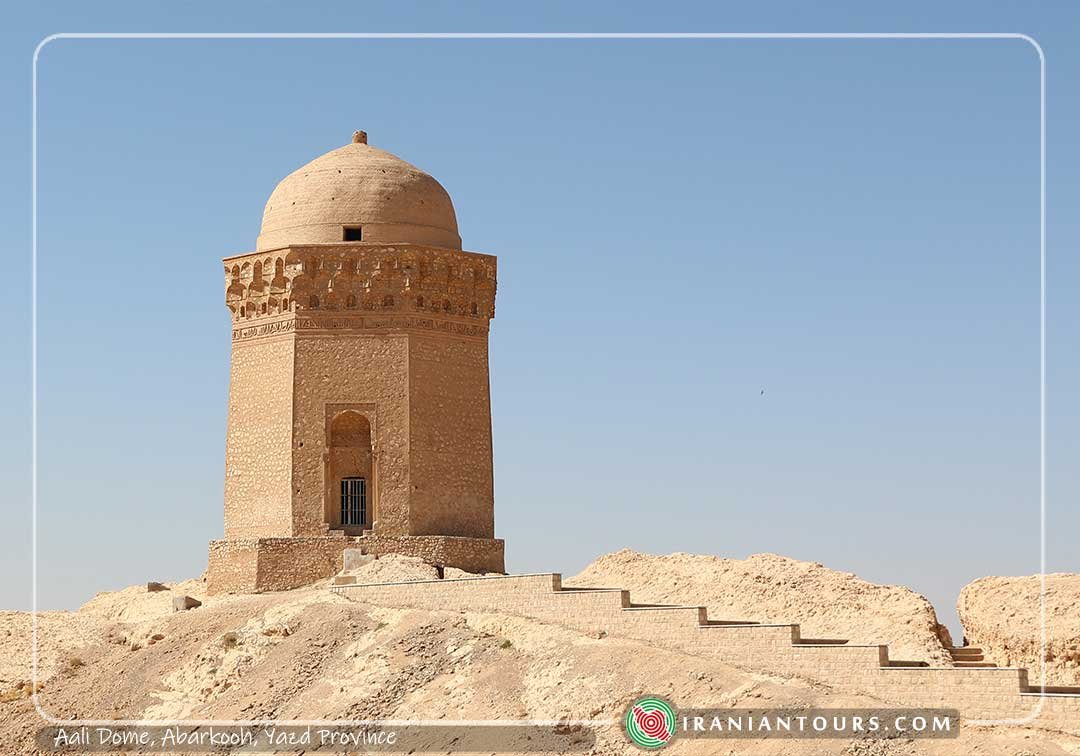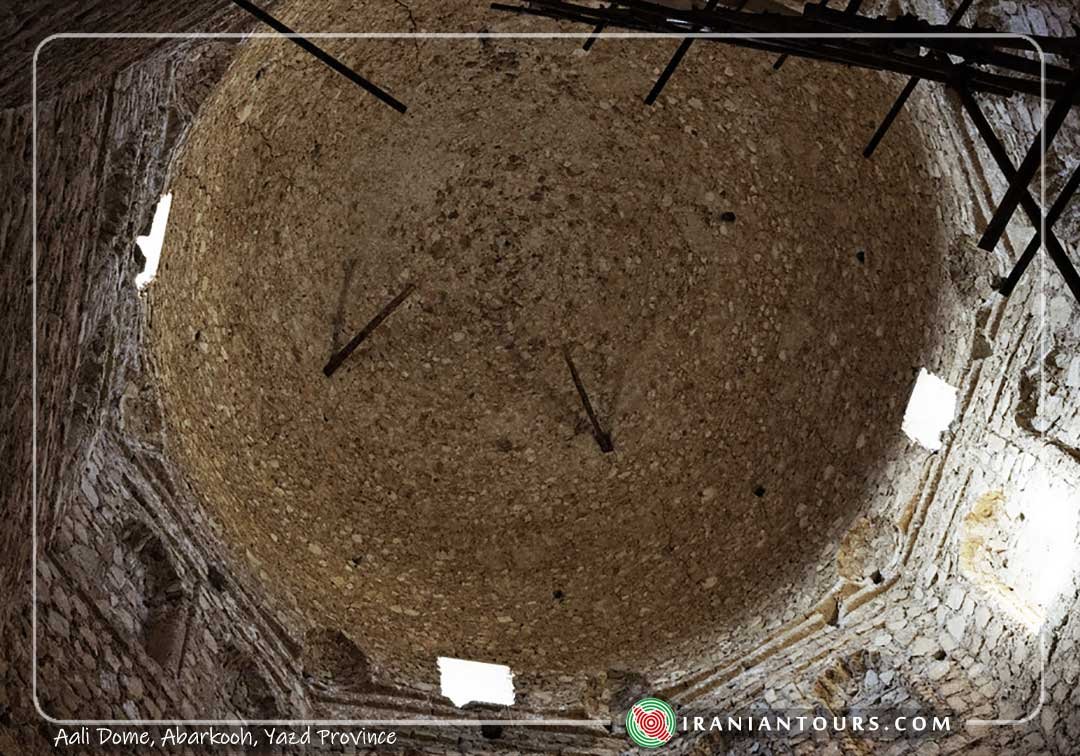Aali Dome
Gonbad-e Ali is another wonderful spot for sight-seeing. It is an octagonal funerary tower made of stone, dating back to the Dylamlyan period in the fifth century AD, and considered as a fine example of Iranian historical architecture.
Unlike other funerary towers of this sort that are made from bricks, Gonbad-e Aali is made entirely of stones! Although the date of its construction is known, the design resembles a much older style of architecture.
The structure is made entirely of stones that are held together by sarooj. The tower structure is topped off by a unique helmet-shaped dome. Connecting the dome to the body of the building, three layers of very delicate Muqarnas plasterwork beautifully line the exterior. The Muqarnas cornices, here, are the oldest known of its kind in Iran.
Just below that, is a band of Kufic calligraphy, inscribed with raised bricks. They tell about the Gonbad-e Aali and it is the tomb of a local ruler from the Dylamian Dynasty. Being from the Seljuq Era, the funerary tower is over a thousand years old now! This makes it a part of Iran’s antiquated history and the building block of the Iranian culture.
The octagonal structure is coming out from a thick square-base. Each wall of the building is approximately 5.5 meters wide. The structure, including the dome, is 22 meters high and the base it’s perched upon is two meters high.
All of Gonbad-e Aali, except for the Kufic inscriptions and the muqarnas cornices, is plain stone. Simple in its design, the mighty tower is not to be taken lightly. Its strong stature has withstood the test of time, allowing for the memory of the buried Dylamian ruler to stay alive!





